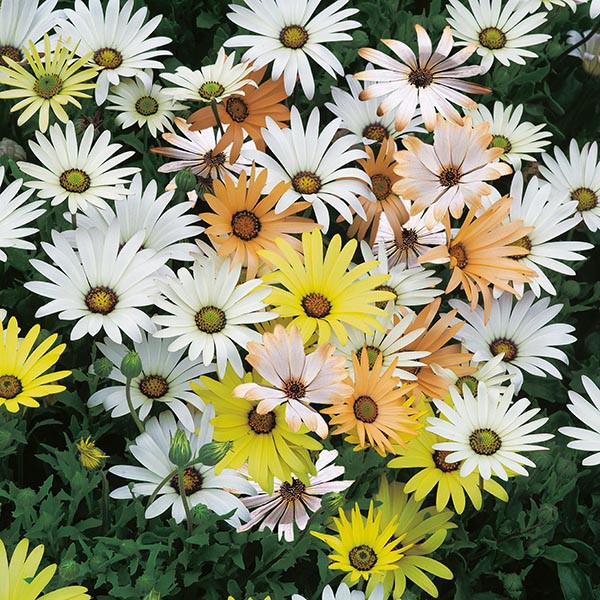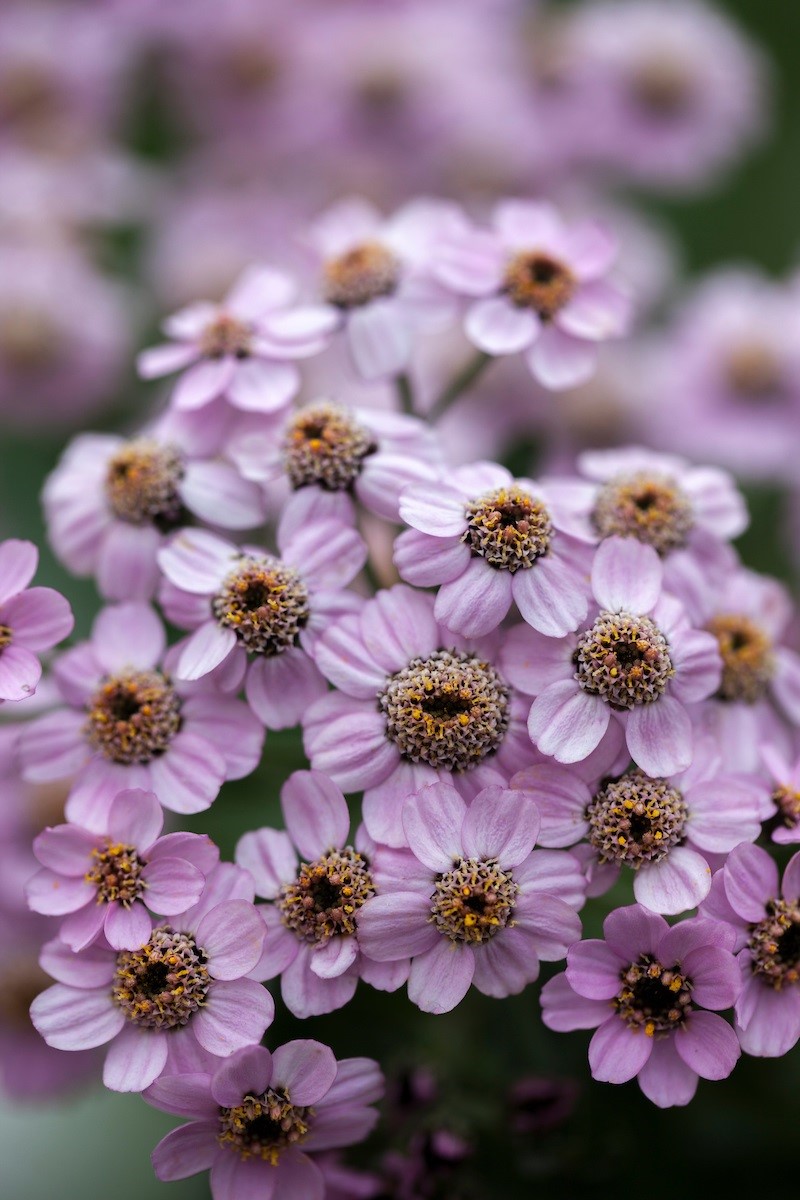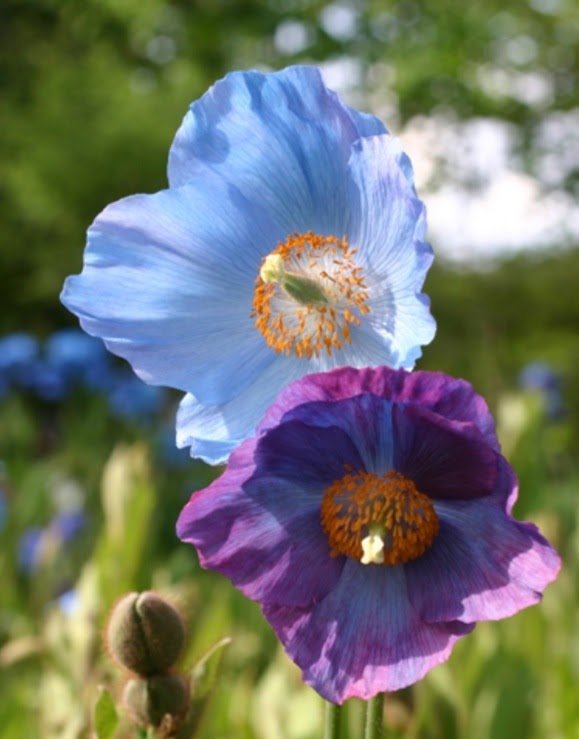
MEMORIES OF AZURE FLOWER BEDS IN NORTHERN SCOTLAND
T
IME doesn’t half gallop along as you get older and when you’re enjoying life. With this in mind, I find it hard to believe almost exactly 20 years have passed since I explored the dramatic coastal far north of Scotland.
Memorable sights there were in plenty – lofty mountains, dramatic cliffs, brooding moors, kilts and sporrans, a plateful of haggis, towns called Thurso, Wick, Durness, Ullapool and, of course, John O’Groats . . .
. . . and gardens exploding with the electric azure shades of classic Himalayan blue poppies.
They grow these eye-widening superstars rather well in the top half of Scotland, as I discovered during a week-long, somewhat damp June safari with an old friend while our wives were sunning themselves in Majorca.
One of the high-spots of the tour was a meander around the Scottish National Trust’s wonderful award-winning lochside garden, Inverewe, which bursts with colour and scents – and boasts a huge collection of blue poppies, botanically Meconopsis baileyi, as well as being home to towering Californian redwood trees.
Not far behind in terms of memorable moments was the Castle of Mey gardens in Caithness, home of the Queen Mother and, like Inverewe, extremely blue from those poppies.
Yet the sight which mesmerised me the most was a modest garden border at one of our one-night B & Bs. This relatively short strip was packed like a botanical treasure chest with The Blues, an overwhelming blanket of pure, piercing-blue beauty, the likes of which I’d never seen before.
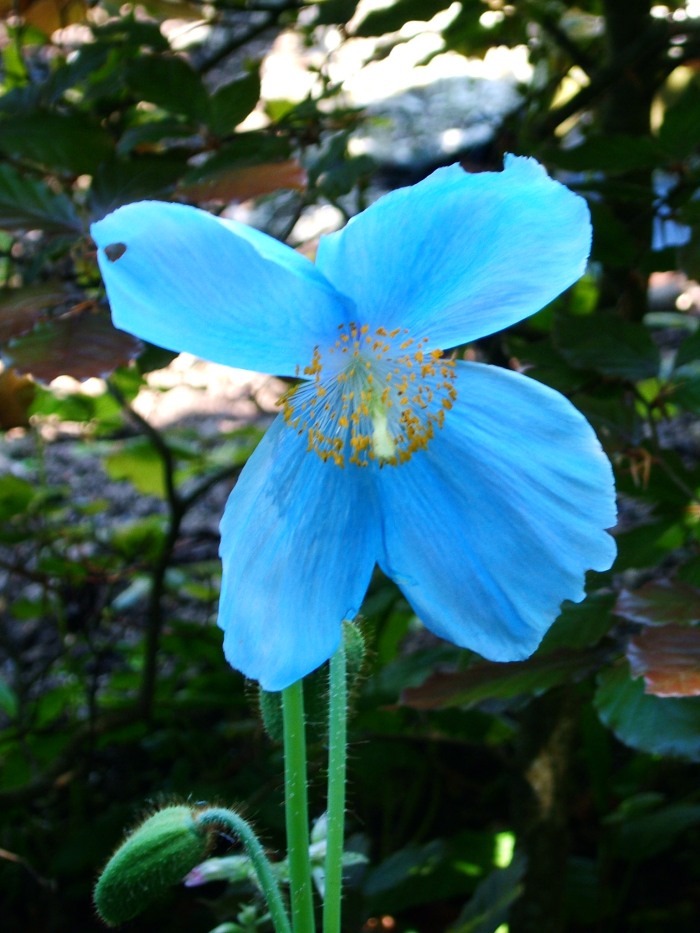
I took a long, lingering look and said to myself: How on earth do the Scots grow ‘em as successfully as Southerners grow petunias?
Answer: Meconopsis hail from the mountains, so relish cool, damp places, high humidity and hate dry feet. It’s perfect Scots fare!
Their colour is like no other flower. So it’s no surprise they prompt a vast following in similar vein to snowdrop or rose aficionados.
Meconopsis, though, are in a different league. Their big, shiny azure blooms which open from brown, hairy buds, are further enhanced by a central nest of golden stamens.
I won’t disguise the fact that blue poppies are something of a challenge to bring on for the three or four years of their all-too-brief lives – unless conditions equate to meconopsis utopia which is principally a cool spot and out of the constant glare of the sun.
As well as baileyi, the two other best blues are Meconopsis grandis and sheldonii – and all have earned the RHS Award of Garden Merit gong, all reach between 3ft and 5ft and all with flowers measuring 4in to 6in across. Watch out, too, for two other superb forms in the shape of Slieve Donard and the even taller Branklyn which soars to 6ft and is named after a garden in Perth, Scotland, where it was discovered.
Add to that Meconopsis Lingholm, one of a few varieties to produce fertile seeds, Barney’s Blue which initially bears attractive pink-purple flowers that gradually change to a striking pure blue on stems 4ft high.
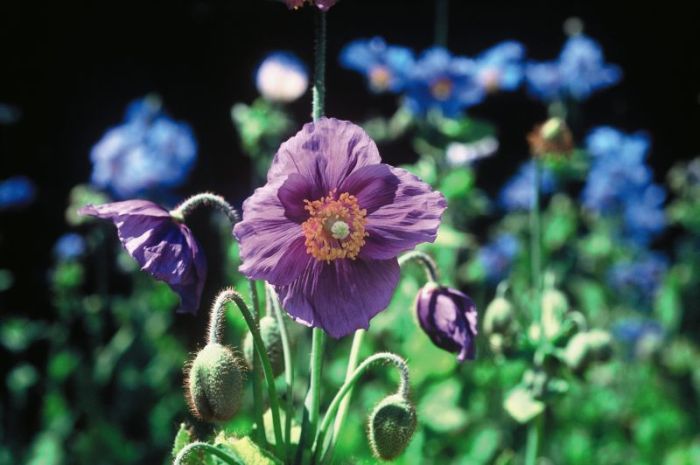
■ Bewitching blue – and purple – poppies: Top – Meconopsis Barney’s Blue and Hensol Violet make a stunning duo; centre – my success with growing Meconopsis baileyi a few years ago; above – another shot of Hensol Violet in flower and bud cluster.
I must also include Hensol Violet, a variant introduced a few years ago by seed specialists Thompson & Morgan which diverts from true blue to intense purple and which quickly became a collector’s must-have.
With due care, baileyi and its hybrids can be coaxed into annual flowering, though failure rates are known to be high – myself included – much to growers’ chagrin.
To sum up for the best chance of success:
■ Acid soil, like that enjoyed by rhododendrons, will produce the most intense colours.
■ Seed sowing is, surprisingly, easy and should be done in gritty compost in June or July. If you need to store the seeds pop them in the fridge.
■ Sow thinly, otherwise seedlings are prone to collapse and die if overcrowded.
■ A cool, shady spot sheltered from strong winds suits them best. Staking for loftier plants may be advisable.
■ Water frequently in hot, dry weather and feed in February and June with a balanced fertiliser.
■ Do remember – blue poppies and traditional poppies (papaver) may be related but their needs are quite different. The blues flourish in shade, while their cousins adore as much sun as you can offer them.







